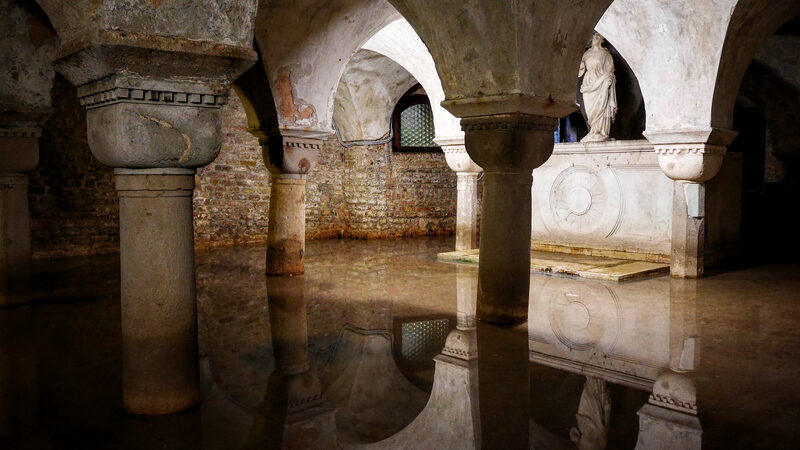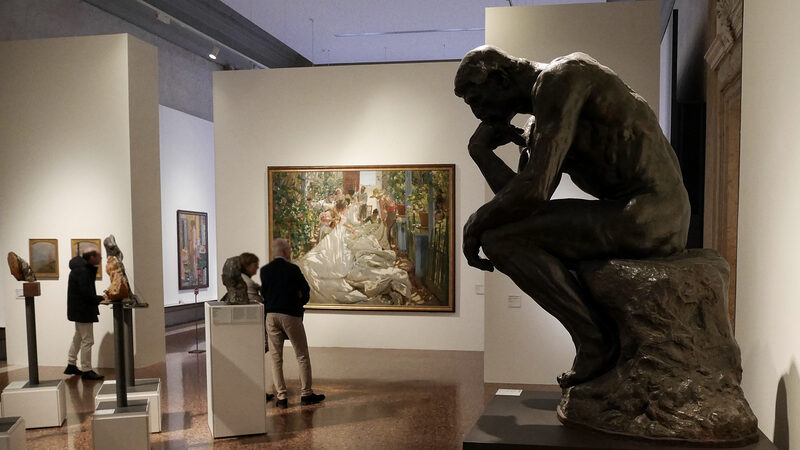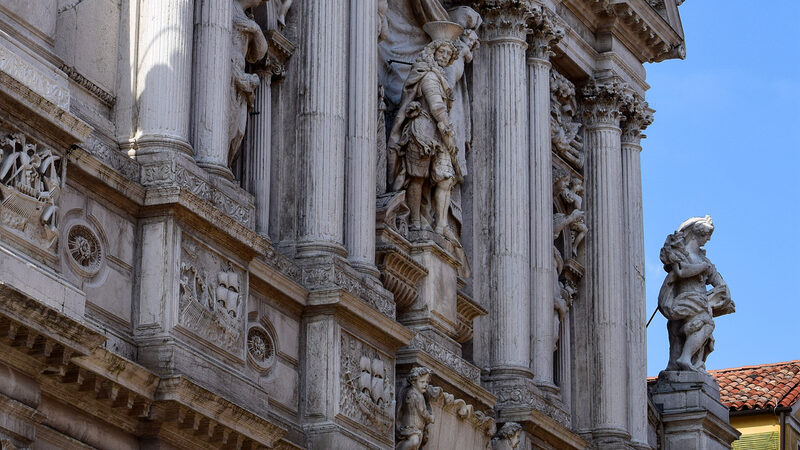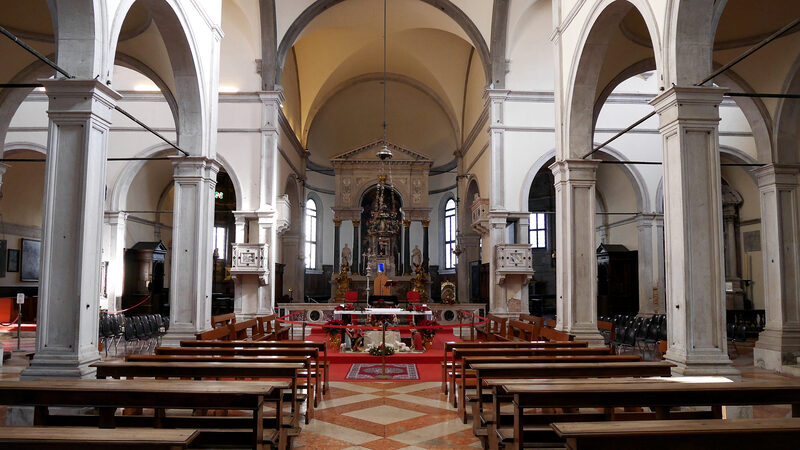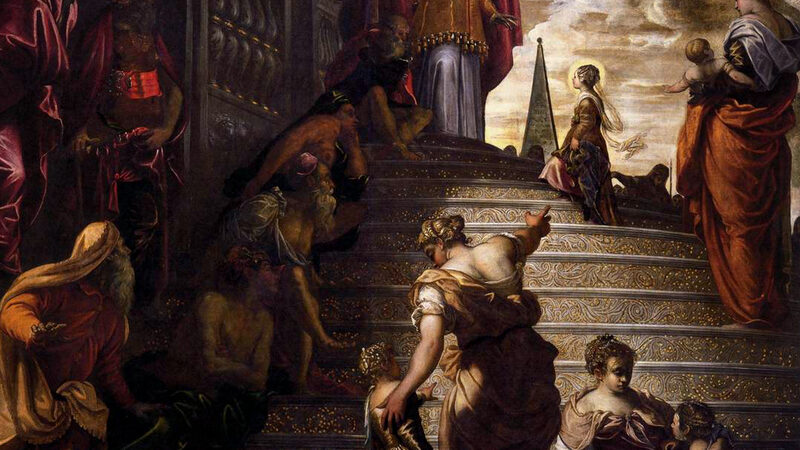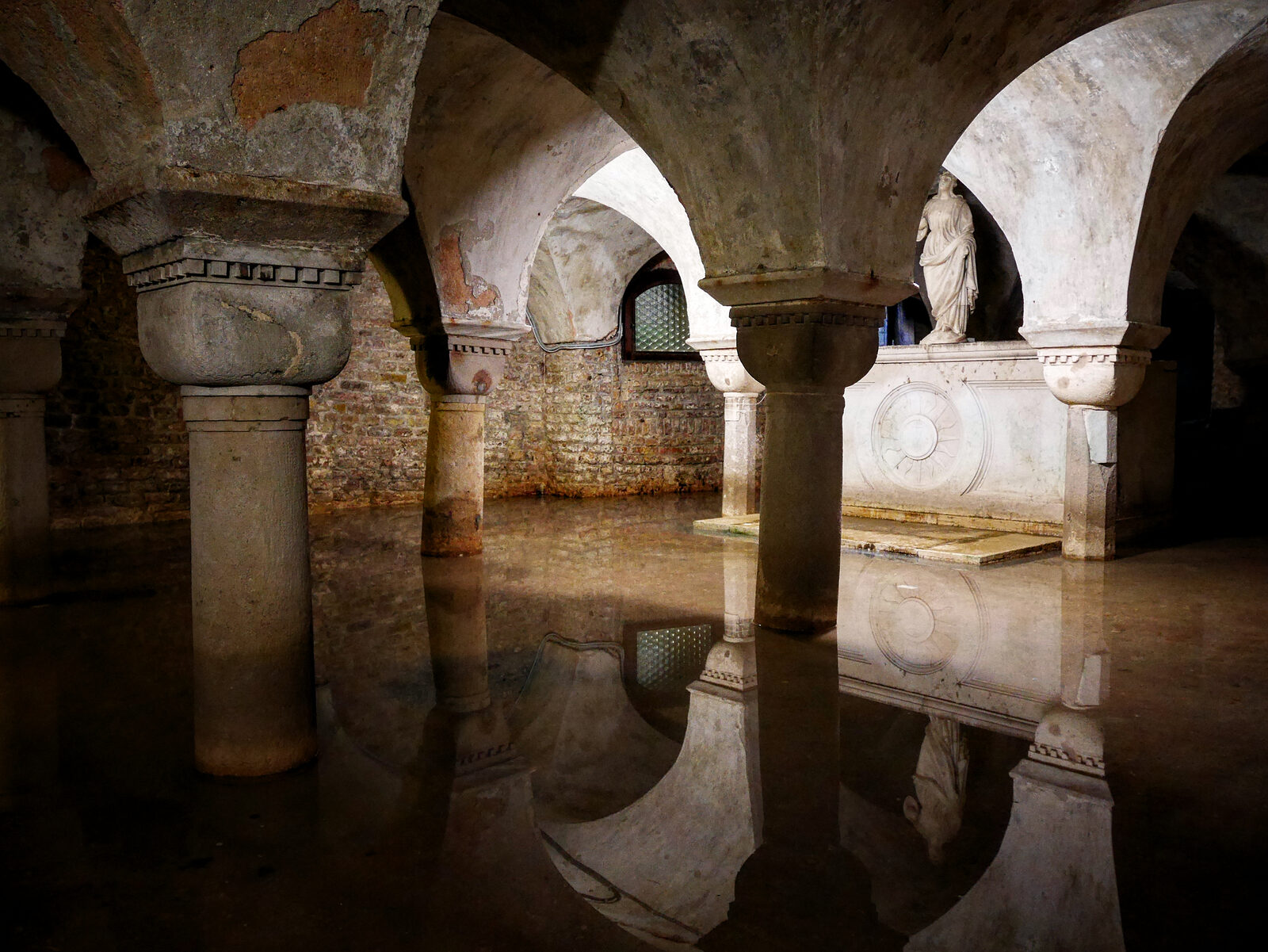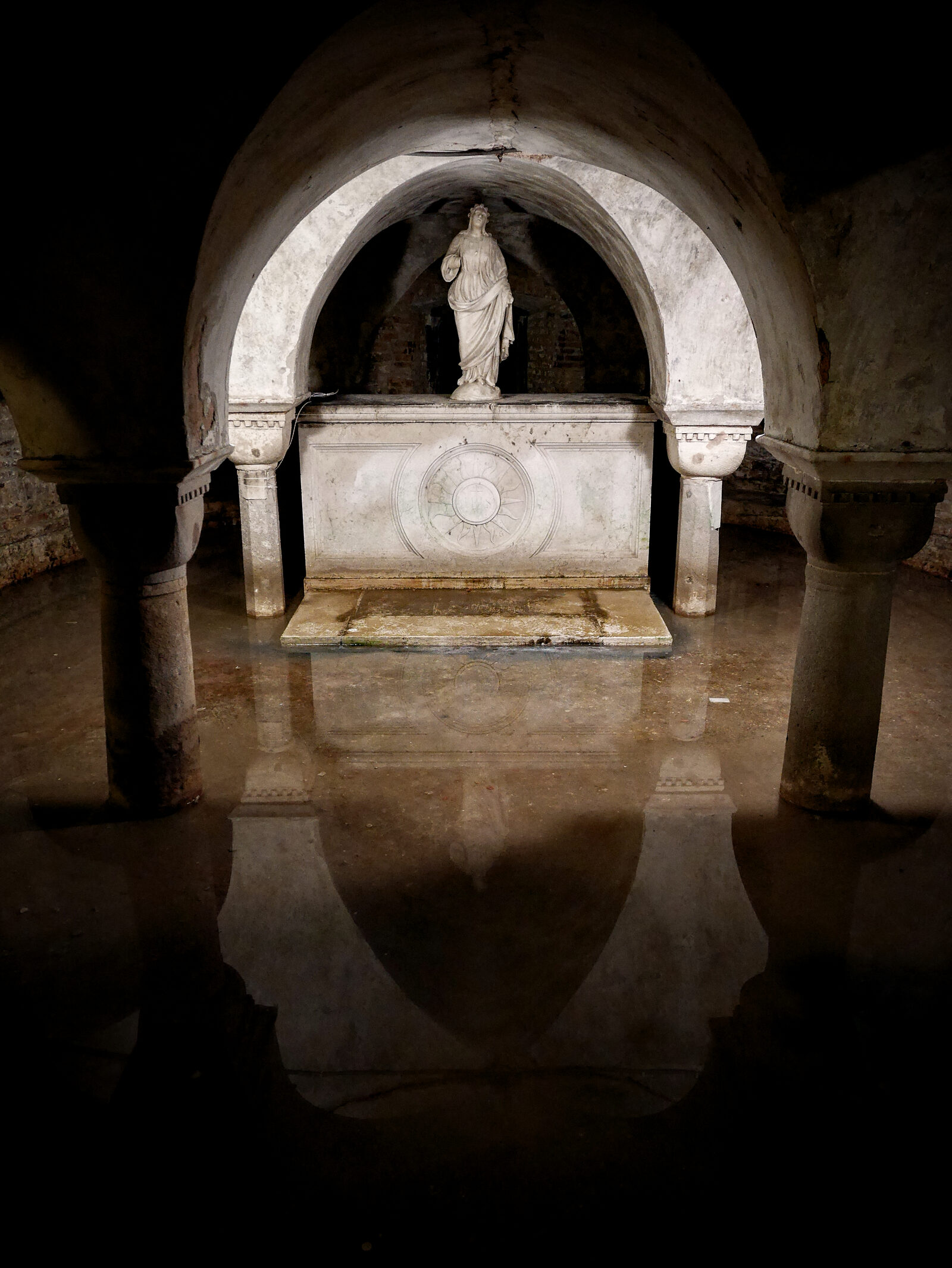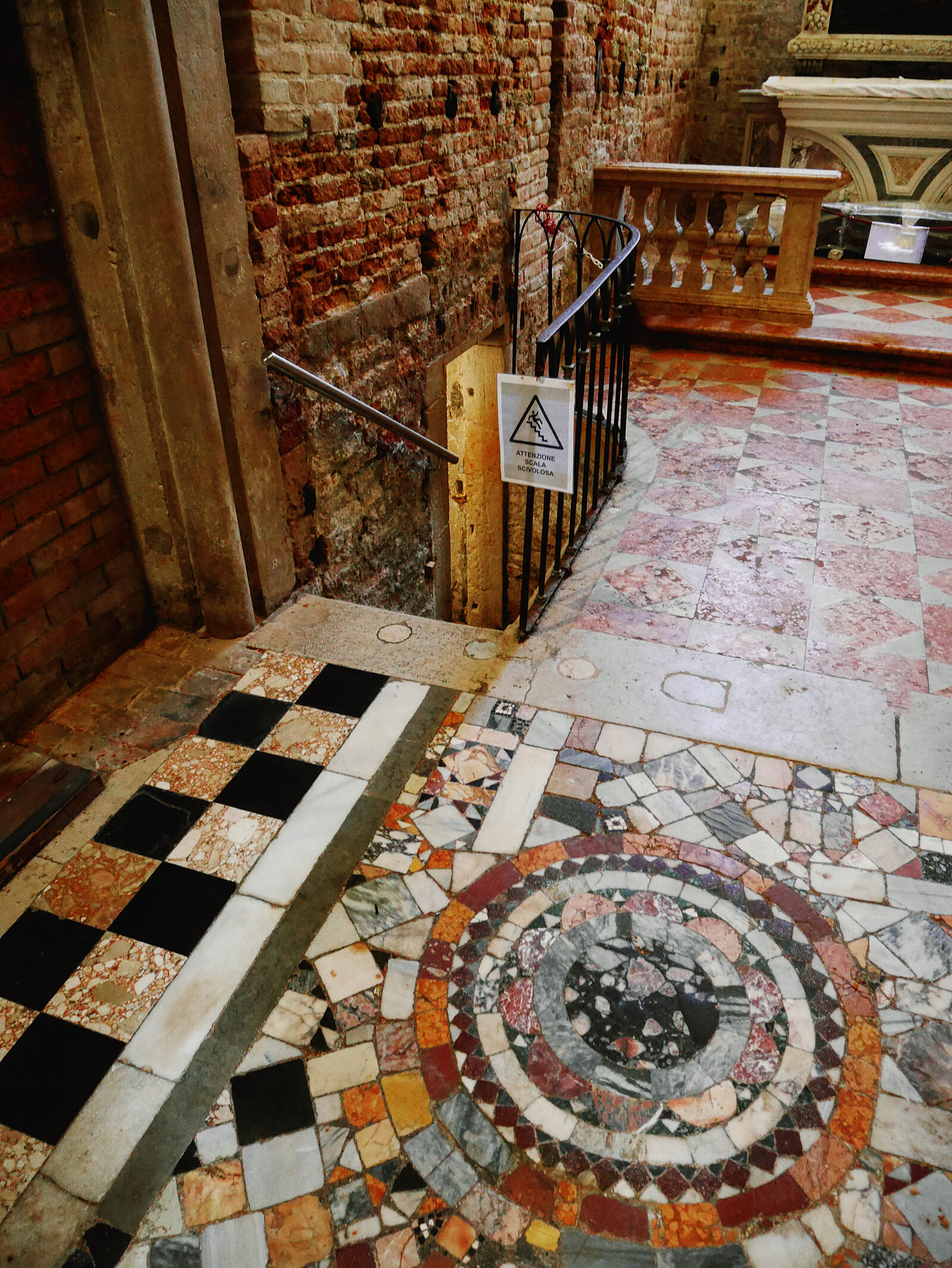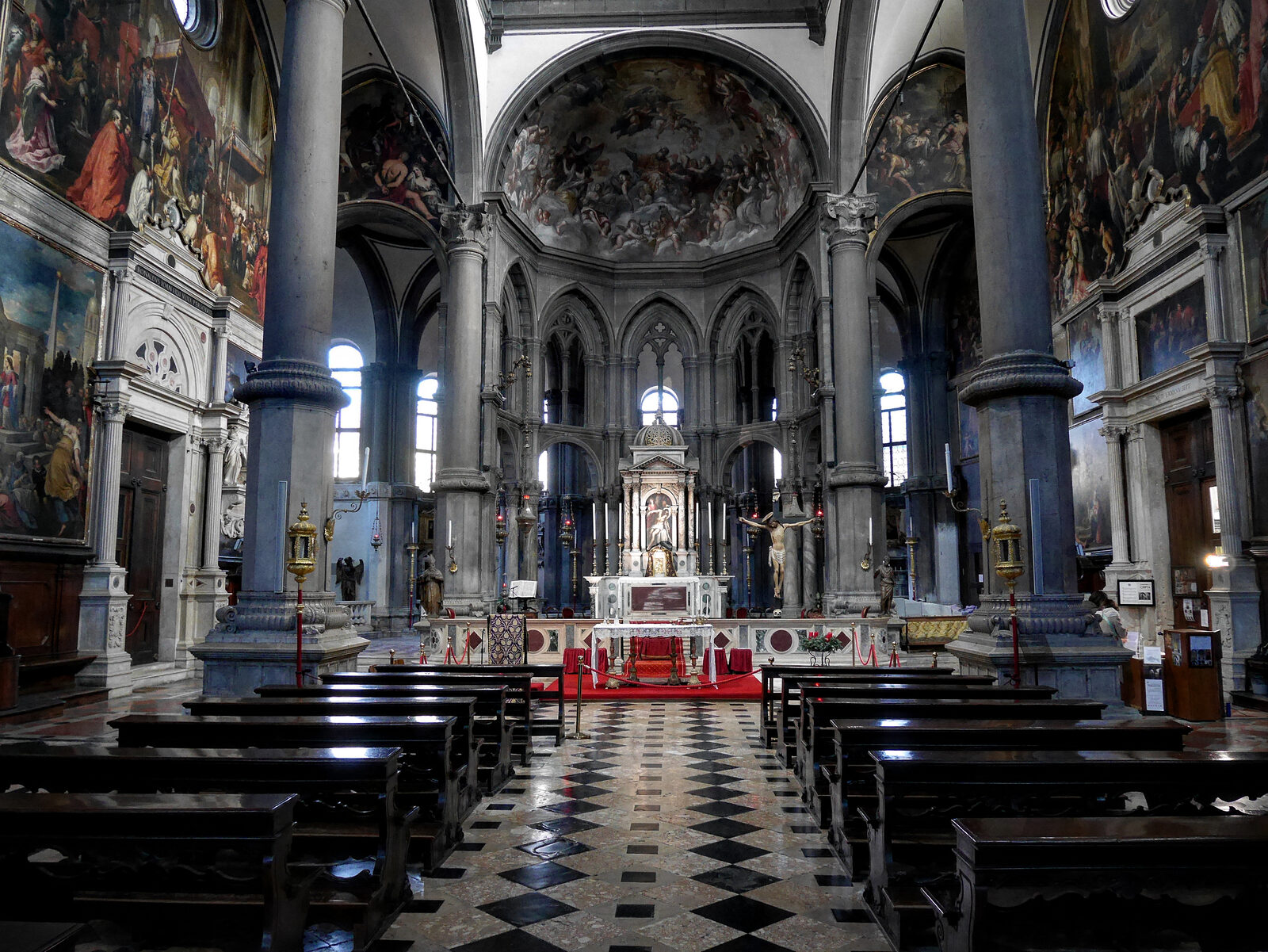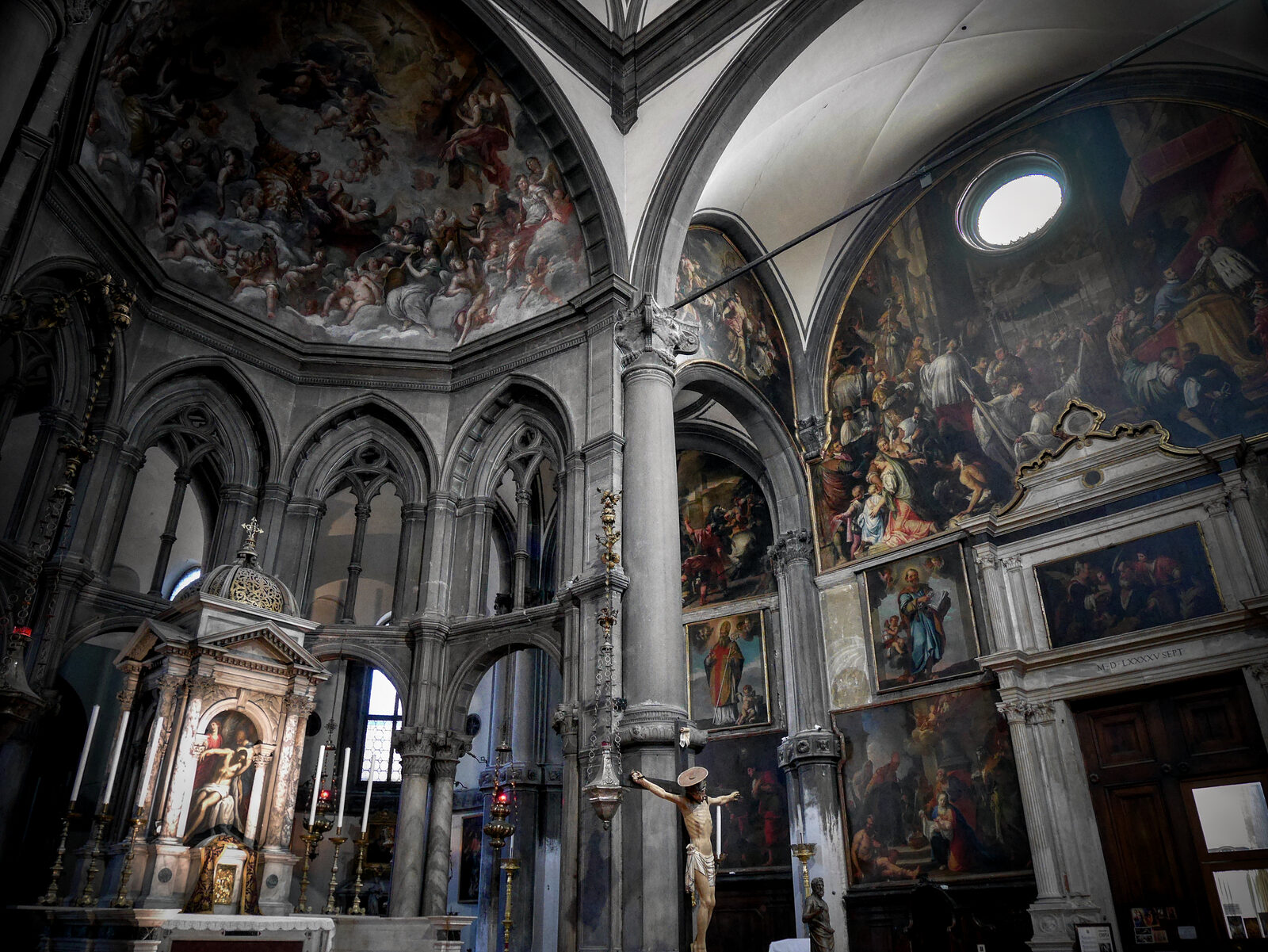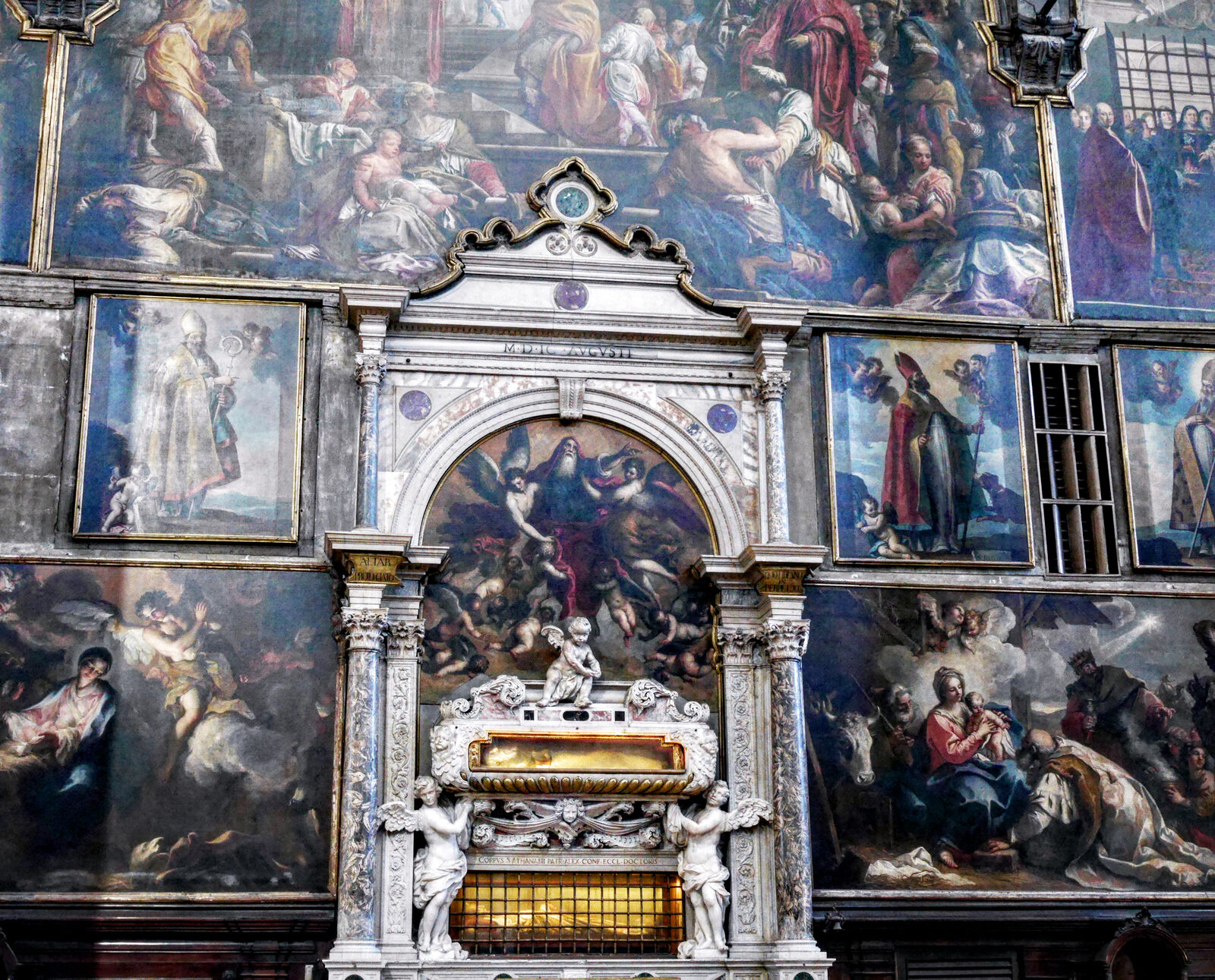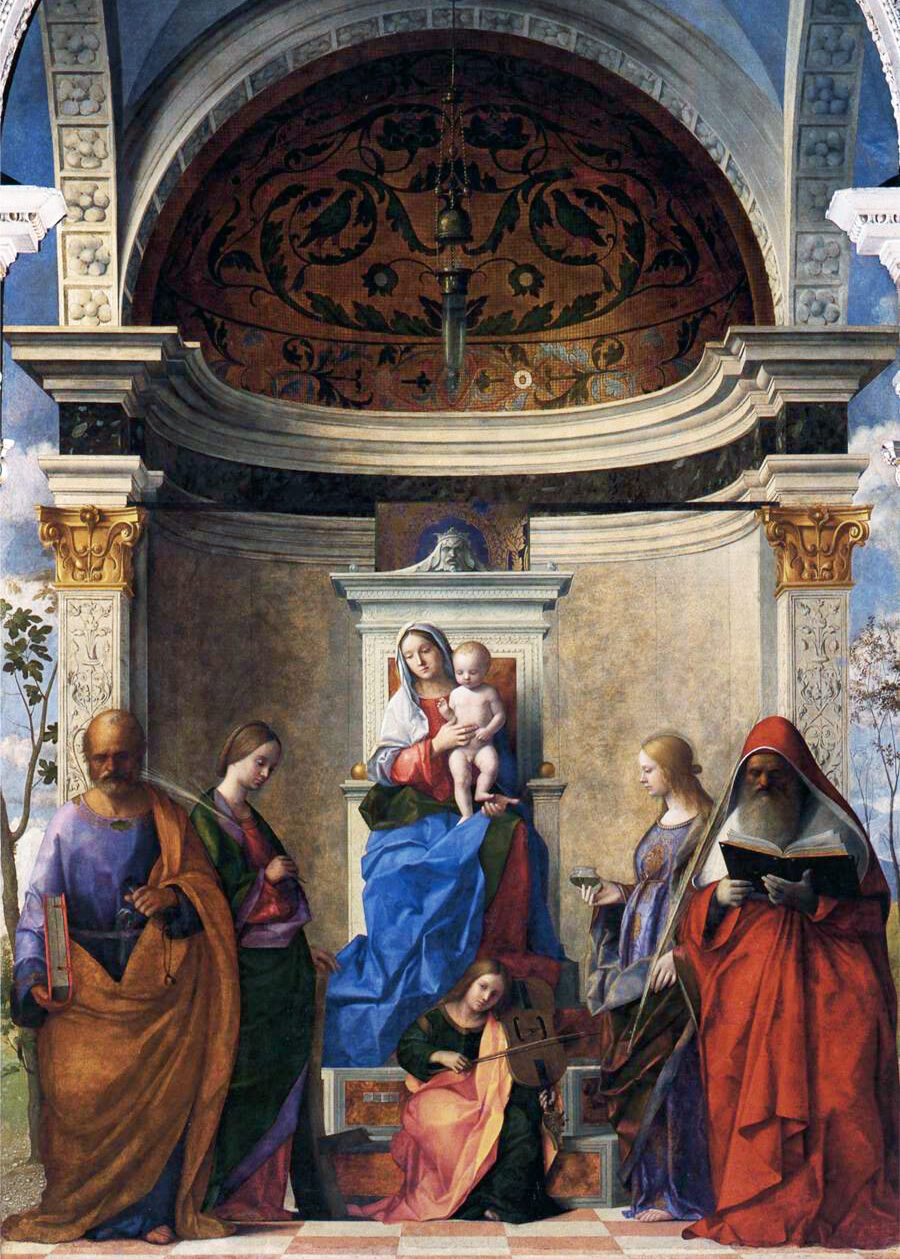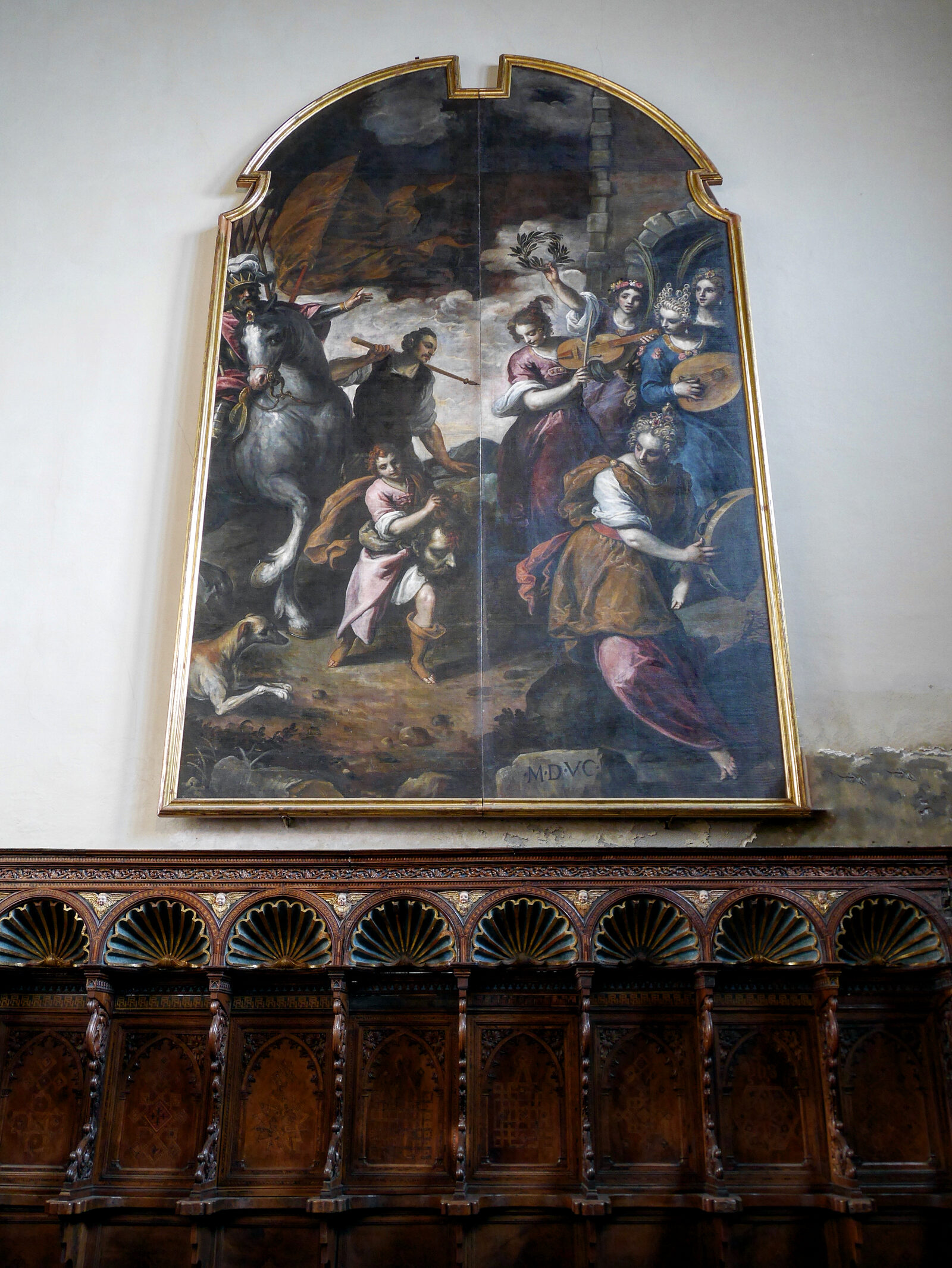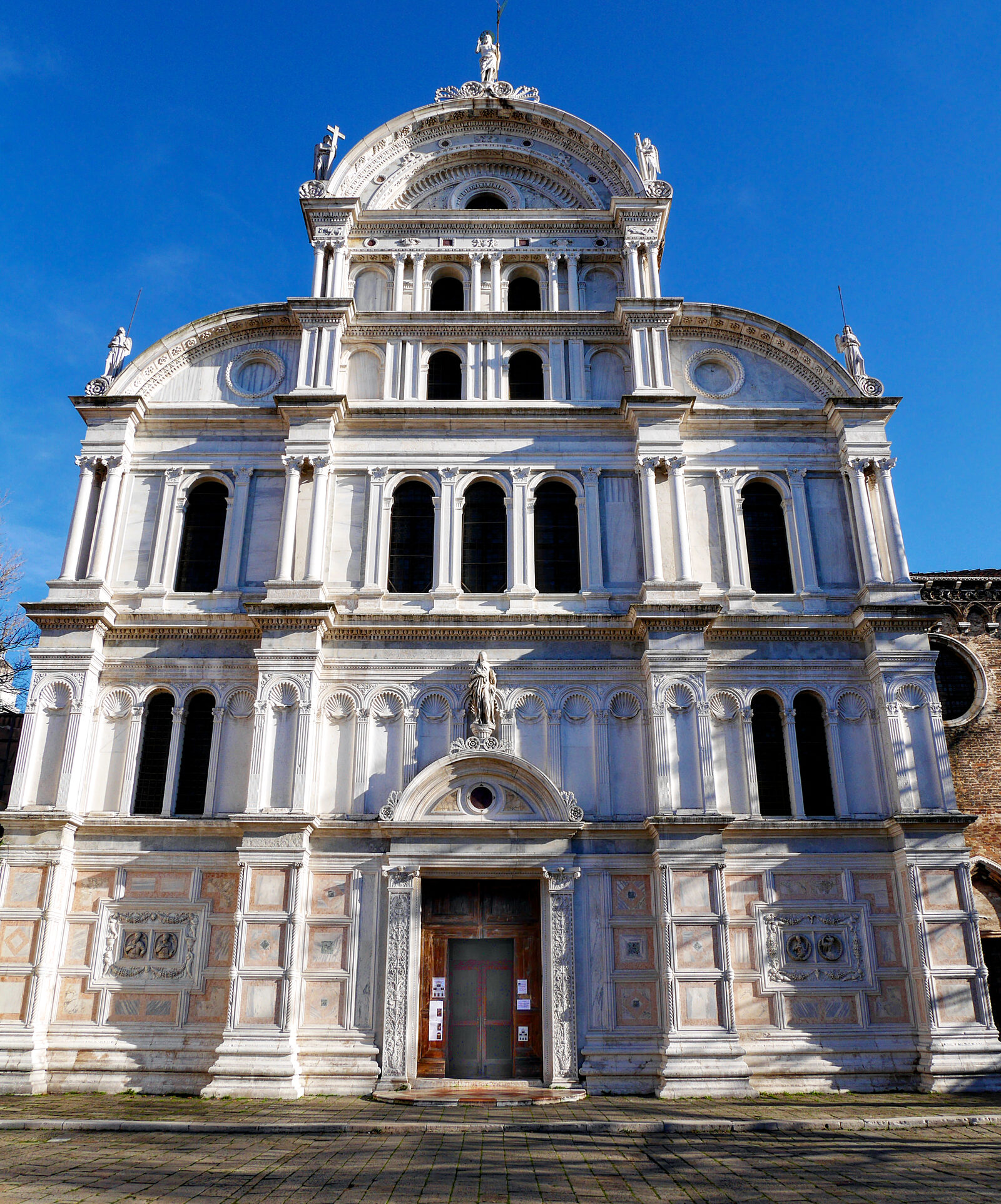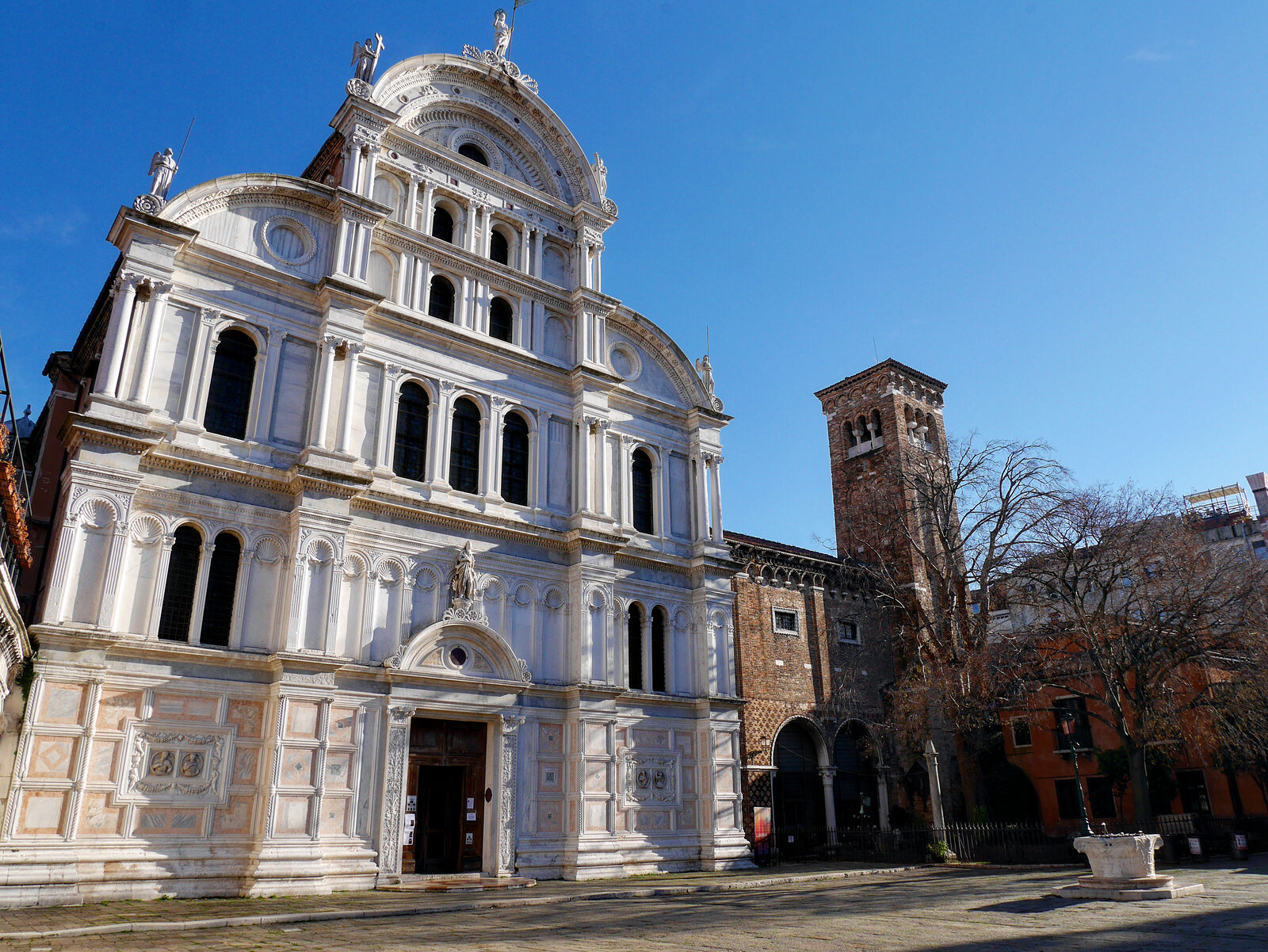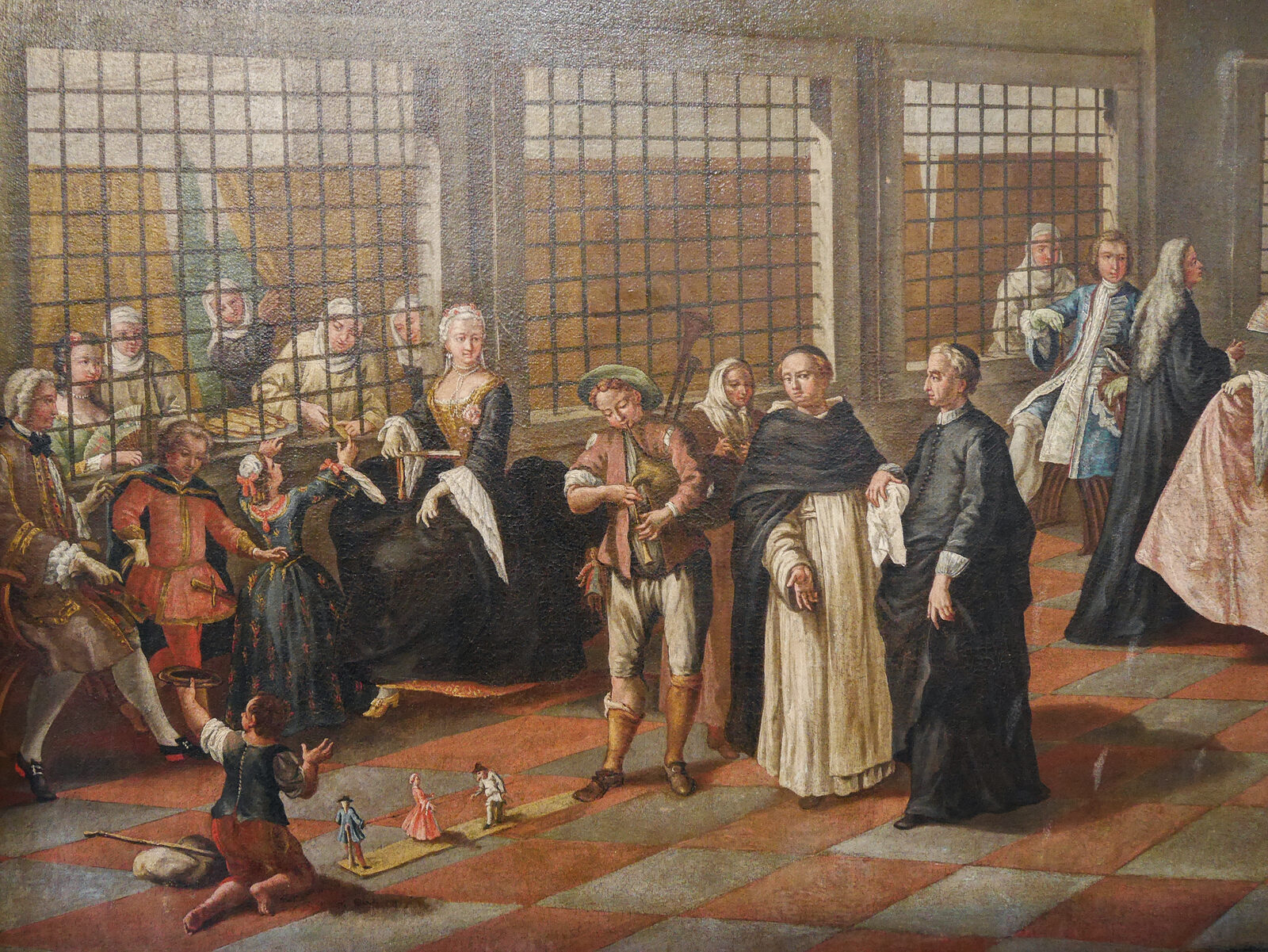Sestiere Castello
Chiesa di San Zaccaria
Church of San Zaccaria
Gothic-Renaissance church concealing a mysterious flooded crypt.
San Zaccaria (2-min walk)
+39 041 522 1257
While entrance to the church is free, access to the crypt and small museum costs €3.50.
Additional resources
What makes it special
Two churches in one
The radiant 15th-century facade that greets visitors in the campo actually wraps around a much older structure. The 9th-century original church, along with the adjoining convent, can still be seen to the right side of the complex.
An ethereal, flooded crypt
The colonnaded 10th-century Romanesque crypt — part of the older church — holds eight tombs of early doges, often eerily submerged beneath the lagoon’s rising waters.
San Zaccaria altarpiece
Giovanni Bellini’s luminous Virgin and Child with Four Saints (1505) is the church’s artistic centerpiece — an exquisite example of Venetian Renaissance painting.
Unique architectural feature #1
A ring of tall Gothic windows floods the church's ambulatory with light — a striking element of Northern European church design and a unique feature in Venice.
Unique architectural feature #2
Shaped by evolving styles and multiple architects, the church’s facade begins in the late Gothic style at the base and gracefully transitions to early Renaissance in the upper sections.
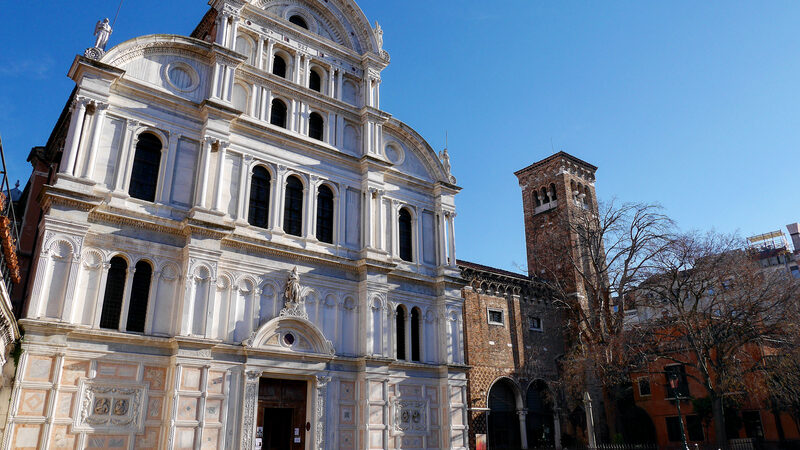
Your experience here
- Descend into the incredible partially submerged crypt.
- Marvel at the stunning artwork that adorns every wall of the church.
- Can you tell where the Gothic ends and the Renaissance begins?
The extraordinary journey of the altarpiece
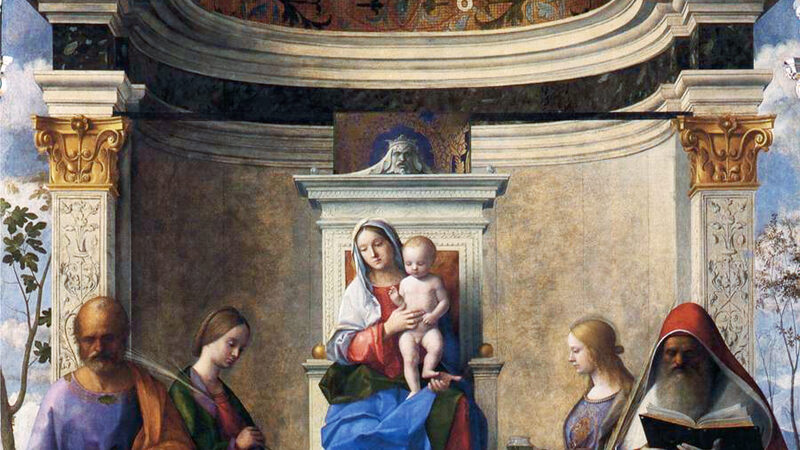
Centuries after Giovanni Bellini — then 74 years old — painted the San Zaccaria Altarpiece, it was deemed such a masterpiece that in 1787, during Napoleon’s ransacking of Venice, his troops cut it from its frame and took it to France. This brutal removal explains the missing section at the top of the painting, just below the crowning arch.
While in France, the painting underwent a radical conservation procedure fashionable at the time and better suited to museum display: the paint surface was detached from its wooden panel and glued onto canvas.
When the altarpiece finally returned to Venice 20 years later, it was reinstalled — though not in its original position. Still, the surrounding architecture makes it easy to believe otherwise.
Designed to appear as an organic part of the building, the altarpiece and its architectural setting work seamlessly together. The linear perspective and flanking carved pillars create the illusion of a doorway into the painted scene, blurring the line between art and architecture.
The link to St. Mark's
The monastery of San Zaccaria was traditionally visited by the Doge and his entire court each year at Easter.
This ceremonial visit is said to have begun in the 12th century, after the nuns donated land for the construction of a ducal chapel — what would become Basilica di San Marco.
The tradition endured for centuries and only came to an end in 1797, when the Republic of Venice fell and the monastery was suppressed by Napoleon’s occupying forces.
What to see nearby
These top spots are just a short walk from San Zaccaria:

super close
Riva degli Schiavoni
tops 5 mins
Chiesa della Pieta (Vivaldi Church)
tops 5 mins
Palazzo Grimani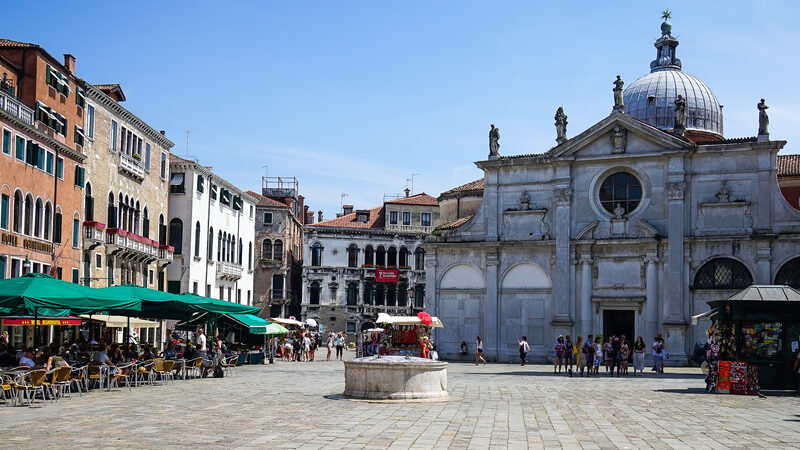
5-10 min away
Campo Santa Maria Formosa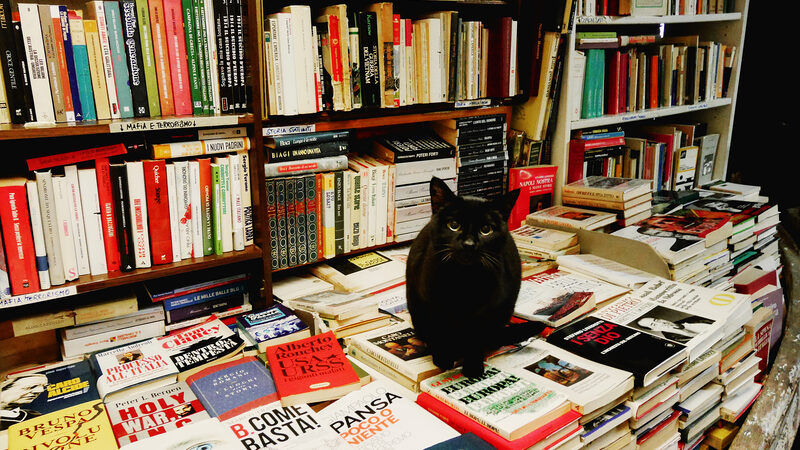
5-10 min away
Libreria Acqua Alta
5-10 min away
Piazza San Marco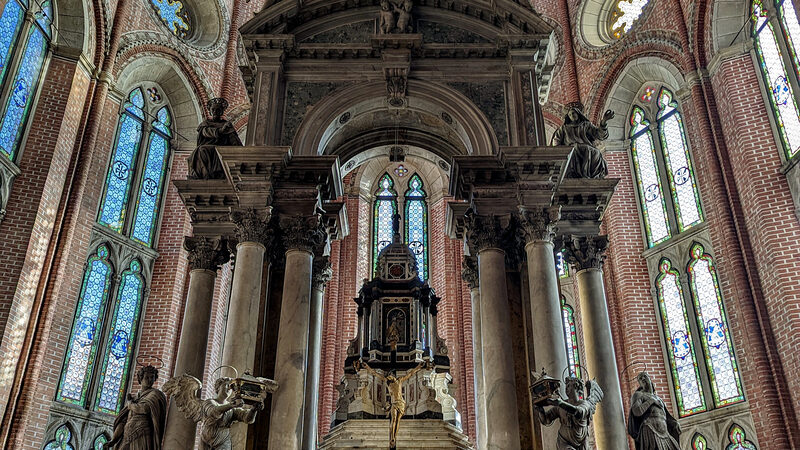
10-15 min away
Santi Giovanni e PaoloMore like this
More atypical places in Venice:
More churches on the Chorus Circuit:
